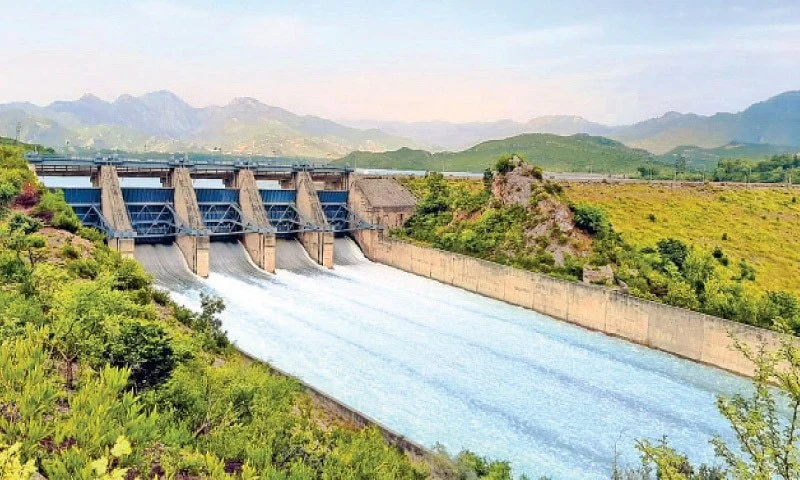Islamabad, 22 May, 2025: Khanpur Dam, a crucial water reservoir situated in Khanpur village of Khyber Pakhtunkhwa, is witnessing a dangerously low water level amid an extended dry period, sparking serious concerns among officials and residents alike.
The water level at Khanpur Dam has dropped sharply from 1,935 to 1,929 feet above mean sea level (AMSL), merely 19 feet above the dam’s dead storage level of 1,910 feet, according to officials from the Water and Power Development Authority (Wapda).
They attributed this significant decline to minimal rainfall in the catchment regions and prolonged dry weather, which has caused natural springs feeding the dam to dry up.
Current data reveals that while only 42 cusecs of water are flowing into the dam daily, the outflow remains at 160 cusecs.
READ MORE: Threat for Islamabad; In Khanpur Dam Only 35 Days Water Left
A senior engineer said that 90 cusecs are allocated for drinking water in Rawalpindi and Islamabad, while approximately 6 cusecs are distributed to smaller users, such as the University of Engineering and Technology, Taxila, and the Heavy Industries Taxila.
Irrigation Suspended Amid Growing Alarm
With Khanpur Dam nearing critical levels, authorities have halted water distribution for agricultural use to both Khyber Pakhtunkhwa and Punjab provinces.
Officials warned that if the pre-monsoon rains fail to arrive on time, the dam will not be able to meet the water needs of the twin cities.
The effects of climate change and consistent heatwaves have further worsened the situation, causing a visible drop in groundwater levels.
The exposed bed of the dam, along with emerging rocks and dry patches in the reservoir and spillway areas, paints a concerning picture. Even the Haro River, which supplies water to the dam, is reportedly beginning to dry up.
Environmental and Agricultural Concerns Mount
Khanpur Dam is not only vital for urban water supply but also supports vast agricultural zones. Farmers are increasingly anxious about the potential impact on their crops, especially fruit orchards producing oranges, loquats, and lychees.
READ MORE: Severe Water Shortage Expected in Islamabad
Environmentalists, meanwhile, have flagged unchecked commercial activity and stone quarrying along the Haro River as contributing factors to the dam’s shrinking water reserves.
With no immediate relief in sight, authorities and residents now await the monsoon season, which may determine the fate of this vital water source.









